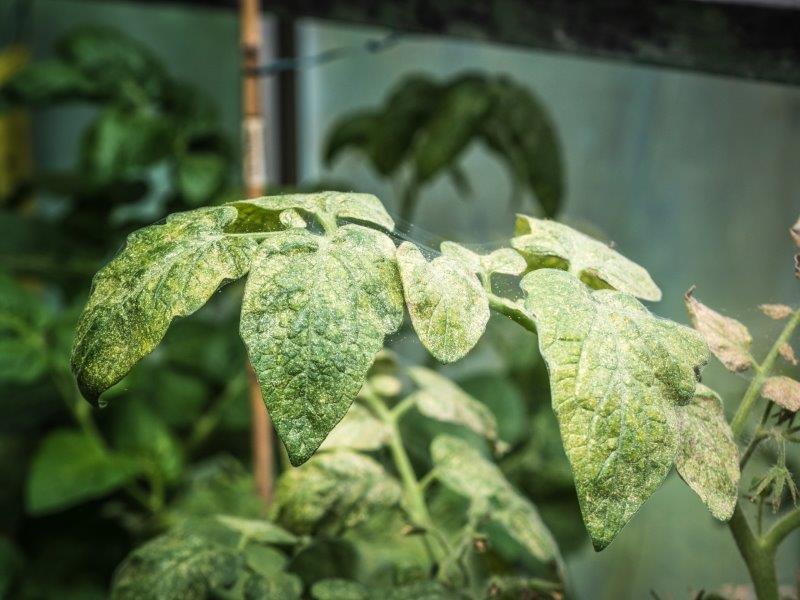Nearly synonymous with aphids to both outdoor gardeners and indoor plant enthusiasts, spider mites can be one of the most bothersome pests throughout the world during the warmest months of the year.
However, unlike other garden pests, spider mites are actually tiny spiders belonging to the class of Arachnids and are more closely related to ticks and scorpions than they are to aphids or mealybugs.
Small, soft-shelled, and swarming like aphids, spider mites are easily differentiated by an unmistakable spider-like webbing which has definite shape when compared to mold-like mealybug “webbing”. Of the 1,200+ species of known spider mites, the most popular throughout the entire world is the two-spotted spider mite (red spider mite) which can often mislead many into believing that all spider mites are the same red-orange color.
How to Get Rid of Spider Mites
- Spider Mite Distribution: More than 1,200 species naturalized throughout the warmest parts on earth
- Spider Mite Host Plants: Flowers, fruit trees, berries, leafy greens, vegetables, and houseplants
- Spider Mite Damage: Curled, yellow-mottled, and web-covered foliage that has been sucked of its sap
- Spider Mite Life Cycle: 8-12 days
- Spider Mite Eggs Per Lifetime: ~100 eggs
- Spider Mite Control: 70% isoprpyl alcohol, pruning, neem oil, dish soap spray, high pressure hose
- Spider Mite Predators: Ladybugs, earwigs, spiders, beetles, lacewings
- Most Common Spider Mite in North America: Two-Spotted Spider Mite (Tetranychus urticae)

What Do Spider Mites Look Like?
Spider mites are small and can be a little difficult to observe without the help of a magnifying glass but can usually be identified by the fine spider webbing produced from their infestation. And if you’re able to get a close enough look at a spider mite, you too will see their definitive spider-like shape.
Because there are more than 1,200 different species of spider mite, there are just as many different colors as you can expect to find including brown, green, black, white, and translucent.
While “true” spiders generally make webs on the top of a plant for hunting, spider mites will excessively web a host plant only when infestation is at its worst.
Spider Mite Damage

As spider mites drain the host plant of essential sugars and juices, leaves will initially show signs of a white and yellow spotting.
The pale mottling of the leaves soon develops into a distinct bronzed appearance not too long before the infected plant begins to shed its leaves in decline.
Spider mite infestations can generally be easy to spot because of the individual mites on a host plant or by its unmistakable Arachnid webbing.
Even the smallest individual spider mites can be spotted with the naked eye on an indoor houseplant before an actual infestation.
Whether an indoor orchid or outdoor eggplant, the damage caused by spider mites can have different signs at varying times through the infestation.
What Do Spider Mites Eat?
Similar to aphids and mealybugs, spider mites don’t consume the plant directly like herbivores but, rather, are small enough to suck the leaves dry of essential sap and tissue.
The 1200+ different species of spider mites can be found across hundreds of hosts throughout the world with the most common variety, the two-spotted spider mite, often infesting woodier plants such as rose, viburnum, wisteria, as well as peppers, tomatoes, corn, and orchids.
Depending on region, some spider mites feed exclusively on grasses, clover, berries, and conifer trees.
Although regular spiders are always welcomed to the garden to feed on other pests, spider mites do not offer the same benefits and should be removed immediately.
Spider Mite Eggs
Spider mite eggs are generally kept under the protective spider webbing of a host plant for safety and are usually clear or translucent in color, hatching within about 3 days for a speedy lifecycle.
Adult spider mites lay about 18-24 eggs each day for their brief 3-week adult life and will often do so on the same host plant as an infestation.
Similar to aphids, spider mite eggs are usually found on the underside of leaves and are not provided any maternal nurturing the way earwig eggs are known to. Spider mite eggs can be difficult to spot because they require so few days to hatch but, if discovered, best if sprayed off with hard pressure water.

How to Get Rid of Spider Mites
Spider mite infestations can be treated the same way that an aphid or mealybug infestation is remedied.
Whether trying to rid spider mites from an orchid, vegetable crop, or fruiting tree, the first step for many gardeners is to add about a tablespoon of either dish soap, neem oil, or 70% isopropyl alcohol to a liter of water and heavily spray infested parts.
For woody and more established crops such as trees or bushes, use a high pressure hose to directly spray off possible eggs or infestation.
Store-bought ladybugs from any nursery or garden supply store are always an ideal choice for sustainable and long-term pest control.
Spider Mite Treatment

- 70% Isopropyl Alcohol - Lightly apply undiluted alcohol with a cotten swab or spray bottle
- Pyrethrin Spray - Natural chemical extract and pesticide from the genus Chrysanthemum
- Organic Neem Oil Spray - 1 tsp neem oil and 1/4 tsp dish soap to 1 quart water
- Imidacloprid-based Spray - Commercial pesticide popularly used for hardshell pests
- Dish Soap and Water - 2 tbsp to 1 quart water
- High Pressure Hose - Many insecticides are sold to be attached to the end of any common gardening hose for immediate control




